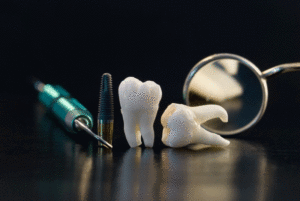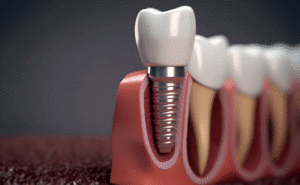It’s estimated that up to 22 million Americans suffer from sleep apnea, a condition where one’s breathing regularly stops and starts throughout the night. Sleep apnea ranges from minor (i.e., snoring) to potentially life threatening and generally falls into one of two categories: obstructive, which occurs when throat muscles relax and airways become blocked; and central, which is when the brain fails to send the signals which control breathing.
Sleep apnea is best diagnosed via a sleep study, but there are many tell-tale symptoms that can also serve as warning signs before you consult with your doctor. These include:
- Hypersomnia, or daytime sleepiness
- Snoring
- Headaches
- Erectile Dysfuction
- Tooth Grinding
- Abruptly awakening
- Waking with a sore throat or dry mouth
- Insomnia
Treating sleep apnea
It’s important to treat sleep apnea due to the variety of medical complications that it can cause, such as heart problems, high blood pressure, fatigue, diabetes and even liver problems. Hence, following diagnosis, depending on the severity of your condition, your doctor may recommend anything from lifestyle changes to breathing apparatuses, or a combination of both.
The most common type of device used to treat more severe cases of sleep apnea is a CPAP, or Continuous Positive Airway Pressure mask, which is placed over your nose as you sleep. The machine works to ensure that airways stay open as you sleep, thereby putting a stop to any interruption in breathing. In terms of lifestyle adjustments, your doctor may recommend the likes of:
- Losing weight
- Regularly exercising
- Administering a nasal spray prior to bed
- Quitting smoking
- Refraining from consuming alcohol
- Refraining from taking sleeping pills
- Alternative sleeping postures
A dental solution
For those with moderate to severe sleep apnea, lifestyle adjustments are unlikely to remedy the problem. And the CPAP and other similar breathing devices aren’t for everyone. Common side effects from wearing the CPAP include stomach bloating, nosebleeds, nose sores and nose discomfort. Thankfully, there are alternatives to treating sleep apnea aside from the CPAP device. One of the most common alternatives are oral devices that are worn in the mouth during the night to keep the airways unobstructed. Such devices are fitted by a dentist and work especially well in patients that experience mild to moderate sleep apnea.
There are two main types of oral devices worn. They include:
- Mandibular advancement device: Also known as a “MAD,” these are the most popular type of mouthpiece for sleep apnea. MADs fit over the upper and lower dental arches and make it so that the lower jaw is comfortably and easily allowed to move forward. What’s more is that they don’t look out of place and are common in appearance to mouth guards worn by athletes.
- Tongue retaining device: Tongue retaining devices are less common than MADs, but can be just as effective. Instead of positioning the jaw so that the airways stay open, tongue retaining devices work by using a stint to hold the tongue in place, thereby preventing it from obstructing airflow.
Sleep apnea is a common medical condition that’s also very treatable – you just need to consult with your doctor and take a sleep test to confirm the condition. Following diagnosis – and considering your doctor’s recommendations – comes treatment. And while the CPAP and simple lifestyle adjustments may be viable for many sleep apnea patients, they aren’t practical for everyone. That’s where an oral device comes in handy. It’s easy, convenient and effective.
For more information about sleep apnea treatment and to see if you would be a good candidate for a MAD or tongue retaining device, contact our offices at (904) 645-3366 today.


